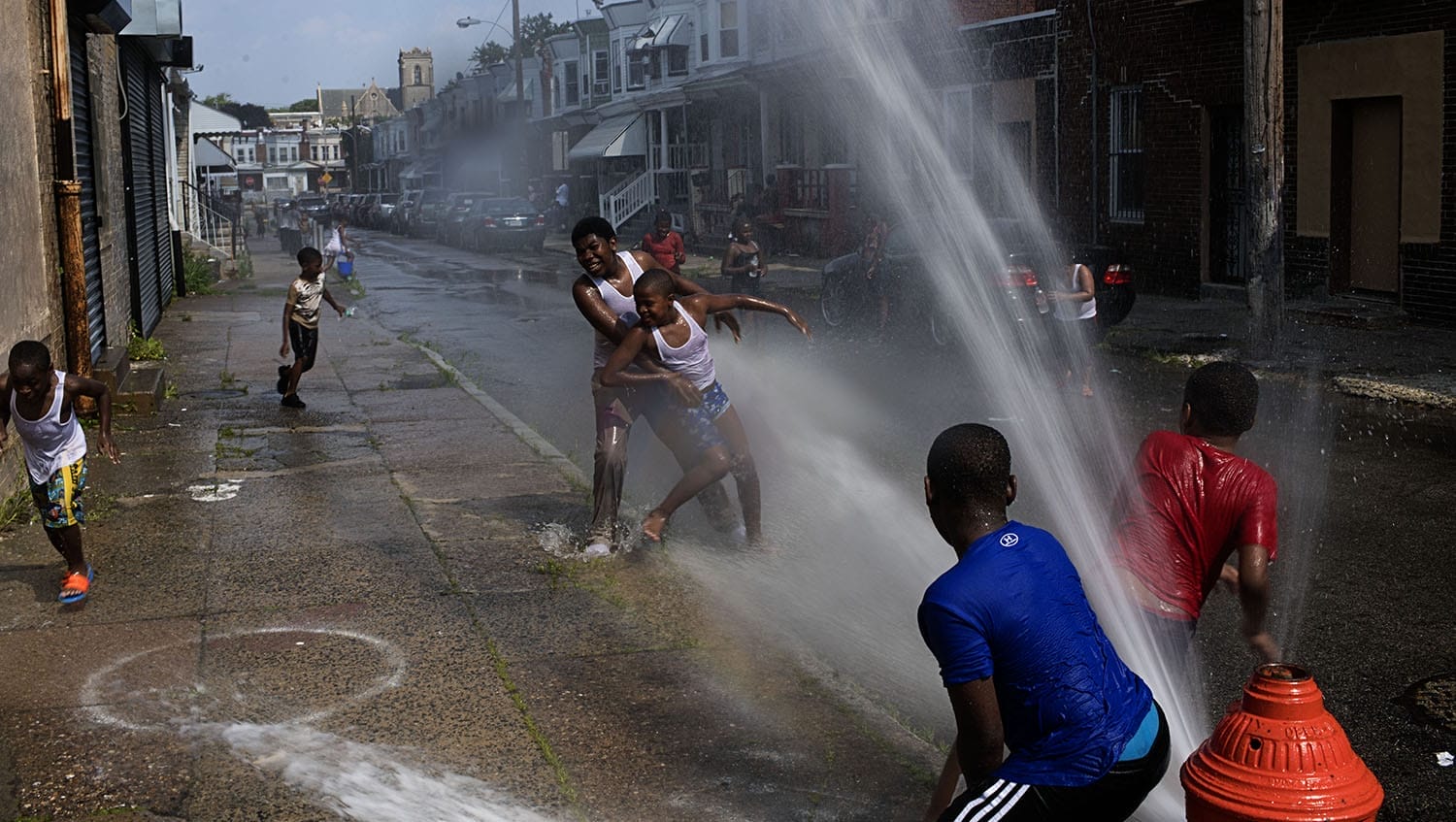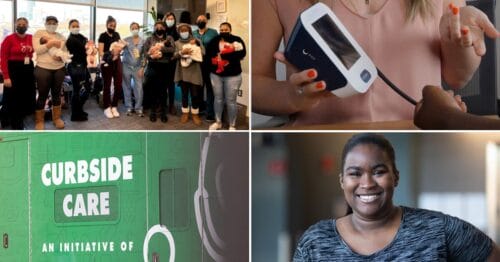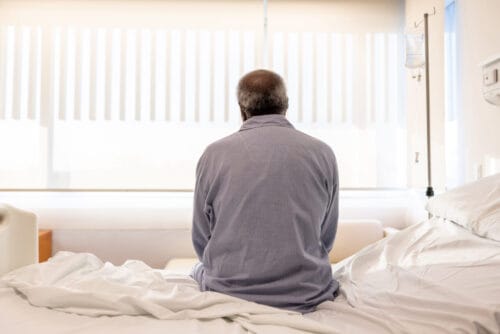Environmental Injustice Heats Up Health Risks for Kids in Marginalized Communities
July 11, 2024
By Ryan Brewster, MD, By Eli Cahan, MD, MS, By Emma Hartswick, MD, By John Rafael, MD

One case study of an 8-year-old's ER visit showcases how summer's heat is more oppressive depending on where you live—and what physicians can do about it.
Imagine you’re an emergency department physician. You have a moment to scan the chart of your next patient: It’s an 8-year-old male with one day of increased work of breathing, tachycardia, and vomiting. In the room a few moments later, you meet an 8-year-old, who we’ll call J.J., and his mother and baby sibling. The mother, who we’ll call Ashley, tells you that her son is usually very active, but over the past two days he’s been sluggish. She hasn’t noticed any congestion or fevers, but he did have a bit of a cough a few days ago. This morning, Ashley took J.J. and the baby to the park to get some fresh air. She had hoped that the kids could cool off in the local pool, but when they arrived, it was closed, and so they went to the playground instead. By early afternoon, the mother noticed J.J. After she tried to give him water, he threw up, so she called an Uber to take them to the emergency room.
You learn in the visit that J.J. lives on the third floor of a triple decker in a neighborhood in Boston with his mom, dad, baby sibling, and another older sibling. The family has three window A/C units, one for each bedroom, but the one in the baby’s room broke last week. To help the baby, the mom borrowed the A/C unit from the older kids, in J.J. and his sibling’s room, and replaced it with a fan.
In their neighborhood today, it’s 89 degrees and 80% humidity. In a wealthier suburb of the city, the temperature maxed out at 84. The low for Boston in the last five days was 82 degrees, and the high was 93 degrees. Currently, 10 of the 18 local public pools are closed for renovations due to safety concerns, including the one in J.J.’s neighborhood.
There is a clear and direct relationship between climate change and health, and children’s health in particular. The World Health Organization (WHO) estimates children under the age of 5 have nearly 90% of the global health burden of climate change. Vector-borne infections, asthma exacerbations, injuries, neurodevelopmental effects from flooding, wildfire smoke, and greenhouse gases—kids bear the brunt of it all.
But the drivers of climate change are not uniformly distributed. Patterns of systemic racism and inequality are inextricably tied to climate vulnerability, as J.J.’s ED visit showcases.
What is environmental racism and how does it create the public cooling gap?
Environmental racism has come to refer to the way in which minoritized and low socioeconomic status communities shoulder a disproportionate number of environmental hazards. From lead poisoning to flooding risks to extreme weather events, it’s considered a form of structural racism to the extent that it directly results from historical and current government and corporate policies and practices responsible for the segregation of wealth, resources, and power in our society.
For instance, heat vulnerability is higher in JJ’s neighborhood than others. In part, this is due to Boston’s history of redlining, the discriminatory practice of the 1930s of refusing home loans to individuals in certain geographic areas, predominantly people of color. The legacy of redlining persists to this day in many ways.
Communities in Boston were previously divided into categories ranging from most desirable to hazardous areas, such as J.J.’s neighborhood. Areas classified somewhere in between “hazardous” and “declining” are now the most impacted by rising temperatures. JJ’s community in particular is susceptible to extreme heat due to a lack of access to public cooling spaces, such as parks, beaches, and community centers or even public water sources. This is known as the public cooling gap, and it contributes to the disparities in heat vulnerabilities seen across different communities.
Structural racism and health conditions
Magnifying the effects of public cooling gaps and other aspects of environmental racism is the disproportionate burden of health conditions. In 2021, the Environmental Protection Agency (EPA) released a report describing these trends. They showed that Black people are 40% more likely than all other groups to live in areas with the highest projected increases in temperature-related events. An extensive literature has backed up these findings with greater risks of cardiovascular, renal, and respiratory diseases associated with extreme heat events. Equally concerning is that Black children are 34% more likely to live in areas with the highest increases in new diagnoses of asthma.
We can clearly appreciate that exposure to climate change, adaptive capacity to respond to these exposures, and sensitivity to their effects is driven by biological as well as larger social and political forces. Children are a high-risk population due to their unique physiology and behaviors, and individual susceptibilities may be amplified by heat islands—urban areas that experience higher temperatures than outlying areas—and other direct products of discriminatory policies borne by underserved groups throughout history.
What is the role of pediatricians in environmental justice?
How do clinicians, especially pediatricians, help protect J.J. and other patients that are most vulnerable to rapidly-changing climate conditions? At the heart of sustainable solutions is environmental justice. Boston Medical Center Health System understands that sustainability is healthcare, and we intentionally launch new initiatives and conduct our operations in ways to minimize our carbon footprint and influence the green space of our communities, including through our rooftop farms, Clean Power Prescription program, and solar panels.
Climate injustice is inextricably tied to the other aspects of injustice, including health and educational disparities. Physicians can speak up about the impact of heat events, particularly on marginalized communities. One way is through advocating for policy change. At BMC Health System, environmental justice is one of the three pillars of our health equity agenda for our government advocacy office.
There is a clear and direct relationship between climate change and health, and children’s health in particular.
For example, the Healthy Homes bill would create a program within the Department of Housing and Community Development to facilitate health-promoting home upgrades—importantly, without destabilizing tenants that are currently living there. In addition, there’s a bill that would convert the Fairmount Commuter Rail—which travels through Dorchester, Roxbury and Mattapan—to electric, both reducing emissions and improving connectivity for these patients. BMCHS has endorsed both of these bills.
Environmental justice wins are possible. Last month, youth activists in Montana won a court battle that ruled young people have a constitutional right to a healthy environment, obligating the state to consider climate impacts in the approval of future development projects. While this decision will certainly be challenged, it sets an exciting legal precedent that is already being advanced in other states.
On an individual level, the voices of pediatricians seeing the health impacts of environmental injustice and heat in particular could be impactful to spur action. We are all well positioned to equip families with knowledge about heat and its health impacts, help families navigate and access resources, and advocate for particular medical needs that might be exacerbated by extreme heat.
*This story has been created from a longer presentation by Boston Medical Center’s Heath Equity Rounds team.


